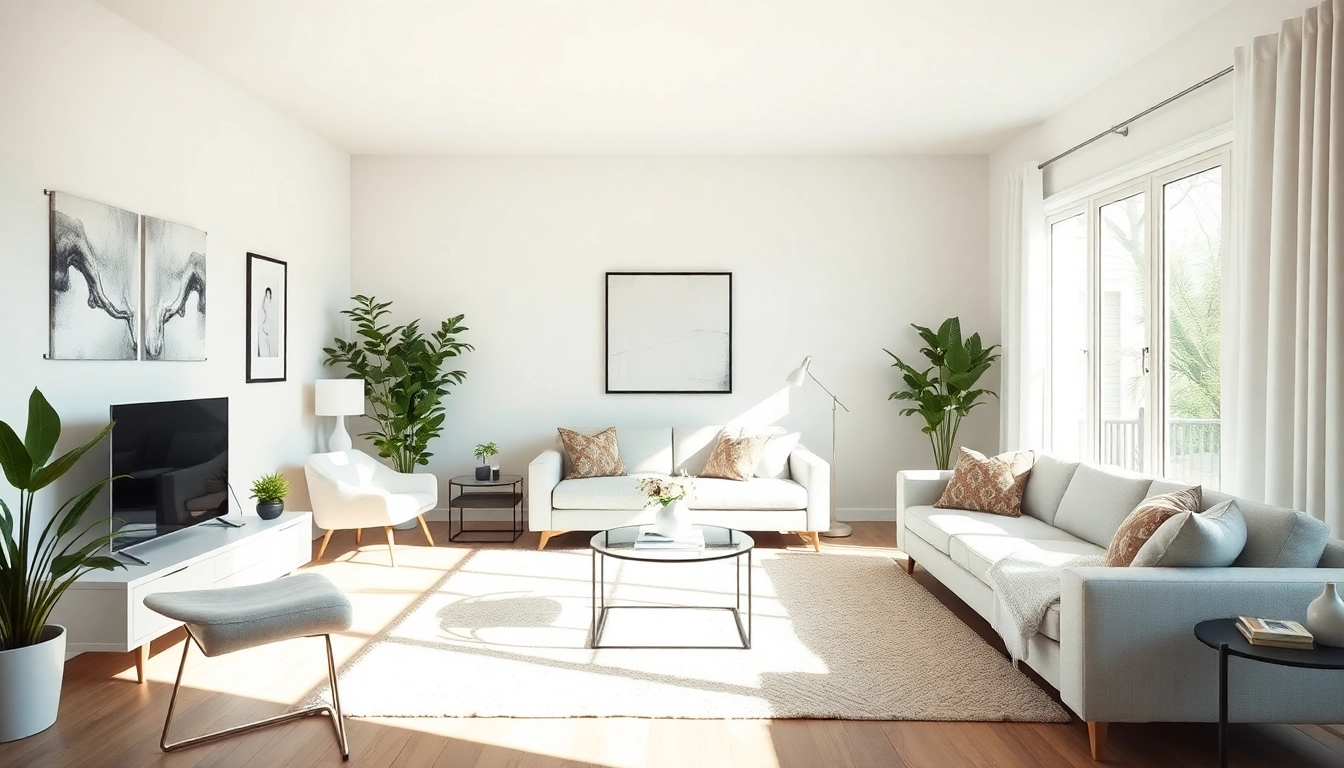The Essentials of an Entire Interior: A Comprehensive Guide
Transforming your home into a cohesive masterpiece requires a deep understanding of your space and your style. Whether you’re moving into a new space or simply looking to revamp your current home, the concept of an entire interior design approach encompasses every room in your home, integrating aesthetics, functionality, and comfort. This comprehensive guide will walk you through the essential elements, planning, trends, and finishing touches to curate the perfect space tailored just for you.
Understanding Your Space and Style
Before diving into design, it’s important to assess the unique characteristics of your space. Observe how the natural light interacts with walls and furnishings throughout the day. Consider the layout: do you have open spaces or multiple rooms held together? Understanding these aspects will guide how you can best utilize the area.
Your personal style plays a significant role in design. Are you drawn to minimalist aesthetics, or does an eclectic mix of styles sing to you? Artists like interior designer Kelly Wearstler illustrate how one can fuse various styles characteristically. Taking the time to evaluate your tastes through exploring inspiration from magazines, websites, and even social media platforms can illuminate your ideal direction.
Key Elements of Interior Design
Effective interior design stems from an understanding of several key elements:
- Color: Color sets the atmosphere of a space. Understanding color theory can help you create a balanced and harmonious environment.
- Texture: Incorporating various textures adds depth and interest to your home. Materials such as wood, stone, fabrics, and metals can all contribute to creating a tactile experience.
- Furnishings: Choosing the right furniture is crucial. Each piece should not only fit the design but also serve a practical purpose.
- Scale: Consider the scale of your furnishings relative to your space. Oversized furniture can overwhelm a small room, while too-small pieces may feel lost in a larger area.
- Lighting: The right lighting can transform a room. Layer multiple sources of light, including ambient, task, and accent lighting, to achieve depth and versatility.
Creating a Cohesive Design Theme
Designing an entire interior means creating a cohesive theme that flows effortlessly from room to room. Start by selecting a dominant color palette that reflects your style while harmonizing with existing architectural features. Incorporate these colors across walls, furniture, and accessories to build continuity. Additionally, unify the style of furnishings—complementary furniture eras or styles can pull a theme together beautifully.
Planning Your Entire Interior Design Project
Budgeting for Your Home Makeover
Setting a realistic budget is crucial when planning any home design project. Start by determining how much you are able and willing to invest. Break down your budget into categories such as furniture, paint, renovations, and accessories. Allocate a portion for unexpected expenses that may arise due to the nature of home improvement.
Selecting the Right Color Scheme
A color palette dictates a room’s ambiance, making it vital to choose wisely. Start by selecting a base color that resonates with your personal style. Use tools like color wheels, swatches, and design apps to visualize how colors work together within your home. Popular color schemes for 2024 include soft pastels mixed with rich jewel tones or warm earthy hues paired with neutral tones.
Choosing Quality Furnishings and Accessories
When it comes to interiors, invest in quality over quantity. Opting for few but meaningful pieces can create a timeless look and feel. Check for craftsmanship details, durability, and comfort in fabrics. Find accessories that reflect your personality, such as unique wall art or vintage collectibles that complement your overall theme.
Top Trends in Entire Interior Design for 2024
Color Trends That Work for Every Home
As we move into 2024, color trends are leaning toward deeper forest greens and serene pastels, capturing the essence of nature and calmness. These colors appeal to homeowners seeking tranquility, creating spaces that are both rejuvenating and inviting. Accenting these main colors with contrasting hues, such as bold reds or yellows, can create a striking balance.
Incorporating Sustainable Practices
More homeowners are opting for sustainable design practices. This can include sourcing furnishings made from sustainable materials, choosing energy-efficient lighting options, and incorporating plants that not only enhance aesthetics but purify indoor air. Brands focusing on eco-friendly materials are prevalent in modern interior design and can largely impact your design project.
Maximizing Space with Minimalism
Minimalism remains a central theme in contemporary design, providing a sense of calmness and spaciousness. The art of decluttering is essential to this trend—choose multi-functional furniture, like storage ottomans or fold-down desks, that can adapt to your needs while keeping your space organized. Open shelving can also be utilized to display curated decor while keeping unnecessary clutter at bay.
Color Selection for Your Entire Interior
Psychology of Color in Home Design
The impact of color on mood is profound. For instance, blue tones can evoke tranquility, making them ideal for bedrooms and bathrooms, while vibrant oranges and reds can energize a space, perfect for vibrant living areas or kitchens. Understanding these psychological effects will help you create an environment conducive to your desired lifestyle.
Choosing Complementary Colors
Complementary colors enrich interiors and elevate the design. Techniques, like using analogous colors (colors next to each other on the color wheel) or contrasting ones (colors opposite each other) can create visual interest and balance. Try swatches in various lighting to see how they change throughout the day, ensuring you love the final result.
Reflecting Your Personality Through Colors
Your home is an extension of yourself and should reflect your personality. Whether you prefer bold and adventurous or soft and inviting, incorporating personal touches will create a space that feels inherently yours. Don’t be afraid to mix patterns and textures — a little daring can lead to a fabulous transformation.
Final Touches: Accessorizing Your Entire Interior
Incorporating Art and Personal Touches
Curating art for your space can highlight individual personality. From large statement pieces to curated gallery walls, art has the power to act as a conversation starter. Incorporate items that tell your story, whether they be travels, family heirlooms, or personal accomplishments—these will instill warmth and connection within your home.
Finding the Right Lighting Solutions
Lighting is integral to enhancing any space’s character. Layer your lighting with ambient light creating general illumination, task lighting for functional needs, and accent lighting to draw focus on specific areas or decorations. Experiment with different types of fixtures, like pendant lights in the dining area or recessed lighting in the kitchen, to set the desired mood.
Maintaining an Organized and Functional Space
An organized home fosters clarity and peace. Implementing smart storage solutions can help keep your space tidy. Consider versatile furniture with hidden storage or attractive baskets that can conceal clutter while staying stylish. Regularly evaluate your space—dedicate time every season to reassess and purge items that no longer serve you.


